It’s common practice to switch to lower compression balls in cold weather in order to compensate for golf balls “stiffening” in the cold. We are going to investigate and test the legitamacy of this practice.
Question:
How does temperature affect golf ball compression?
Hypothesis:
As a golf ball gets colder, it will become less compressible and exhibit different performance characteristics.
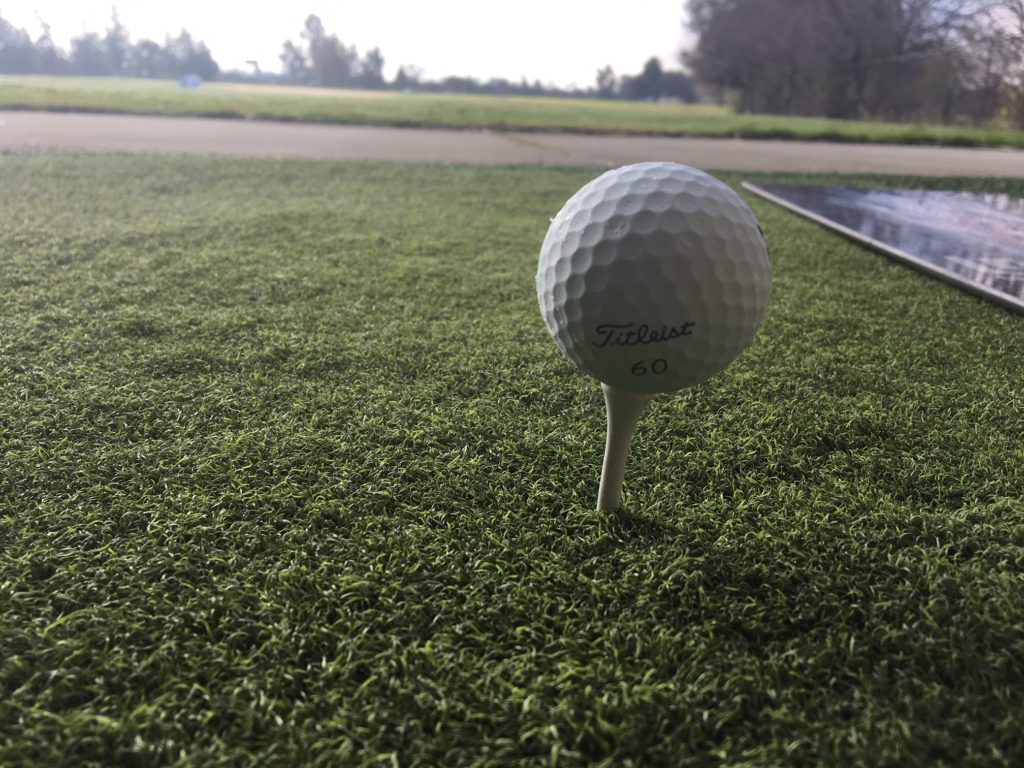
Materials:
- Wilson Staff Duo Soft (12)
- Titleist Pro V1 (2017 model) (12)
- ProCheck Golf Ball Compression Tester
- Freezer
- Dry Ice
- Ice Chest
- Trackman Launch Monitor
- Mizuno JPX-900
Research:
There are two types of balls, multilayer, and two-piece. Two-piece balls are made of a single core and outer shell. Multilayer balls have multiple cores and then the outer shell. This shell is made of either surlyn or urethane. The cores, on the other hand, are made out of rubber composite materials. These materials have varying densities and compressibilities, but almost always are a rubber material. Likewise, surlyn and urethane are both plastic composites. Both plastic and rubber harder to compress the colder they get. Most rubbers have a minimum service temperature range around negative 50 degrees Fahrenheit. Golf ball compressibility is related to swing speed. The harder you swing, the higher compression ball you need. Likewise, if you swing with a slow speed, you will want a low compression golf ball. It is a common practice to switch to a lower compression ball in colder weather because the compression supposedly decreases in cold temperatures.
Procedure:
Our procedure is designed to see how much temperature affects the compression of golf balls. We chose to test the Wilson Duo and Titleist Pro V1 balls. The Wilson Duo was chosen because it is one of the lowest compression balls on the market. The Titleist Pro V1 was chosen because it is an exceptionally popular ball and represents a very common middle compression used. We used a ProCheck Compression Tester to test the golf balls. This tester gives a numeric value between 1 and 8. The 1 value represents very soft, while an 8 is very firm. We begin the experiment by splitting our two dozen balls into six categories. These categories are labeled “Unfrozen Duo”, “Unfrozen Pro V1”, “Frozen Duo”, “Frozen Pro V1”, “Sub-Zero Duo”, “Sub-Zero Pro V1”. Each category will represent four total balls. The two “Unfrozen” categories are kept in a 72 degrees Fahrenheit environment. The “Frozen” categories are kept overnight in a 0 degrees Fahrenheit freezer. Furthermore, the two “Sub-Zero” categories are kept in a cooler surrounded by dry ice at -109.3 degrees Fahrenheit. The next day, all balls are measured using the ProCheck Compression Tester. All the balls are then be transported to the Player Performance Studio at the Haggin Oaks Golf Complex (The sub-zero balls stay on dry ice). There, Hank Vereschzagin, a scratch golfer, hits each category of balls in order with a Mizuno JPX-900 driver. The results are recorded utilizing the TrackMan launch monitor system. The TrackMan monitor supplies a report including smash factor, launch angle, spin rate, carry distance, total distance, landing angle, and height. The results from the two separate tests are analyzed and a conclusion made about the effects of low temperature on the compression of golf balls.
Results:
The results of the compression test are provided in the table below in the numerical value that is provided by the ProCheck Compression Tester. Unfortunately, the ProCheck compression tester struggled with the sub-zero balls. All the sub-zero balls were removed from their ice chest. The Duo’s were tested and, for the most part, gave readings we would expect. However, by the time we got to the Pro V1’s they had been allowed to sit outside too long and were covered in ice. The constant frost forming on these balls made them barely fit inside the machine. Furthermore, the machine would not read the measurements most times. After numerous tries with each ball, we were finally able to provide a reading for each, but only by holding the ball in with a glove. We suspect that the Sub-Zero Pro V1’s gave a reading that was so low because the tester was simply measuring the density of the surrounding ice “shell” that had formed. As a whole, we cannot vouch for the accuracy of any measurement highlighted in yellow.
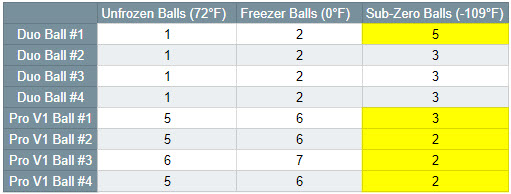
In order to prevent the same frost buildup that messed up the results in the previous test. The sub-zero balls were thoroughly dried and had the frost layer removed. They were then kept in the ice chest right until each individual ball was hit, which limited frost buildup significantly. The results for the TrackMan test are below.
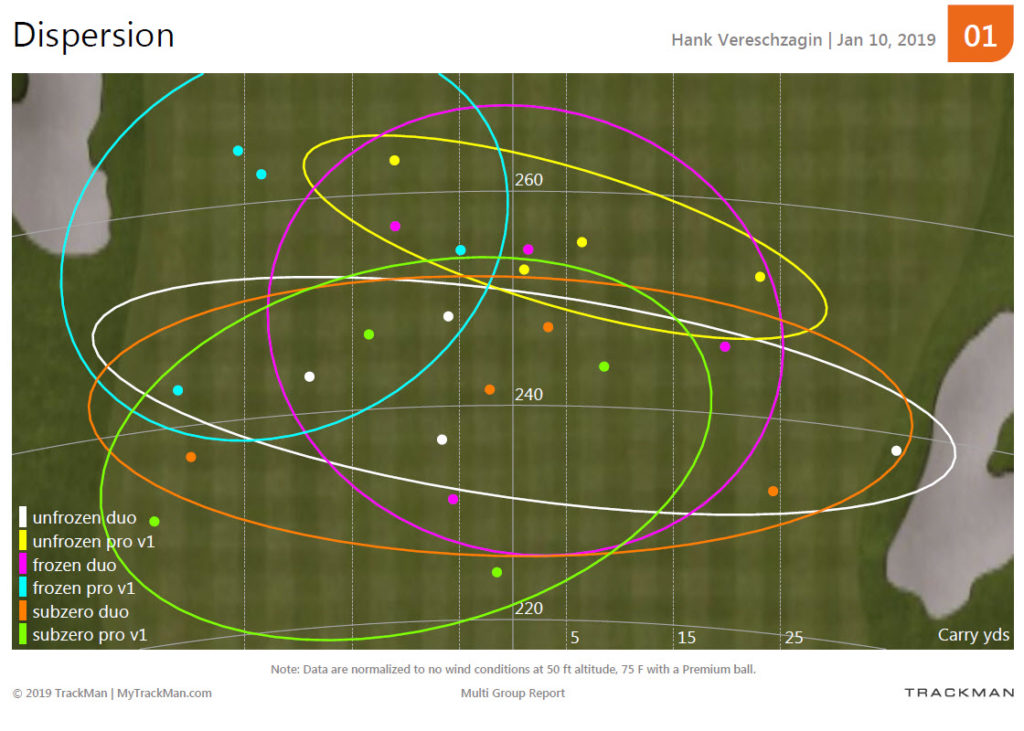
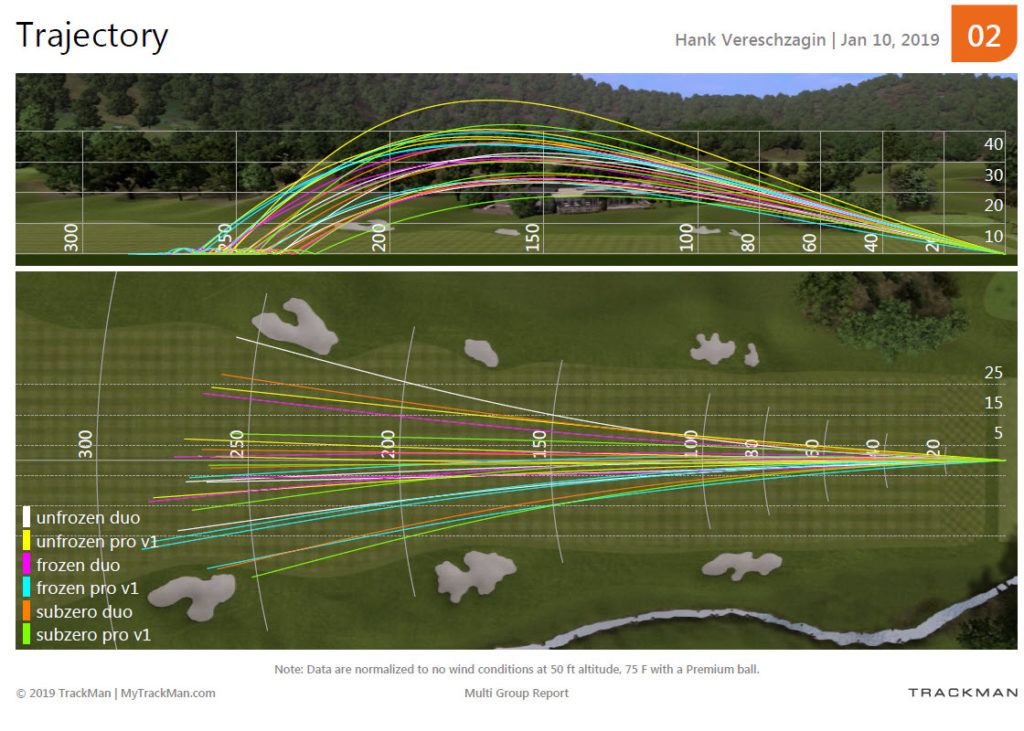



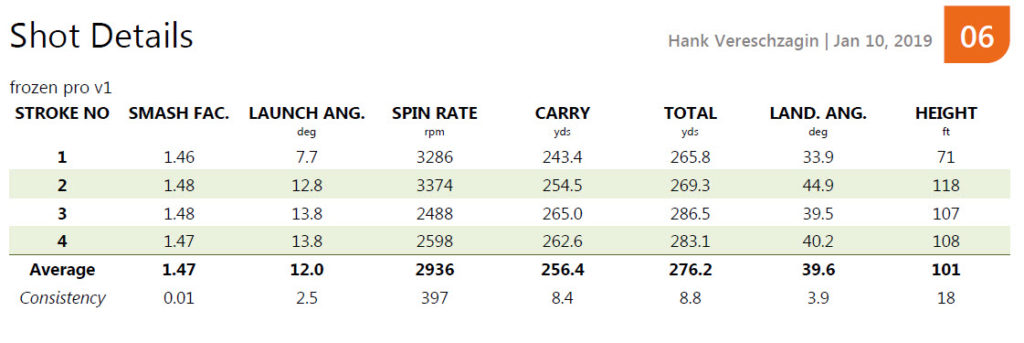
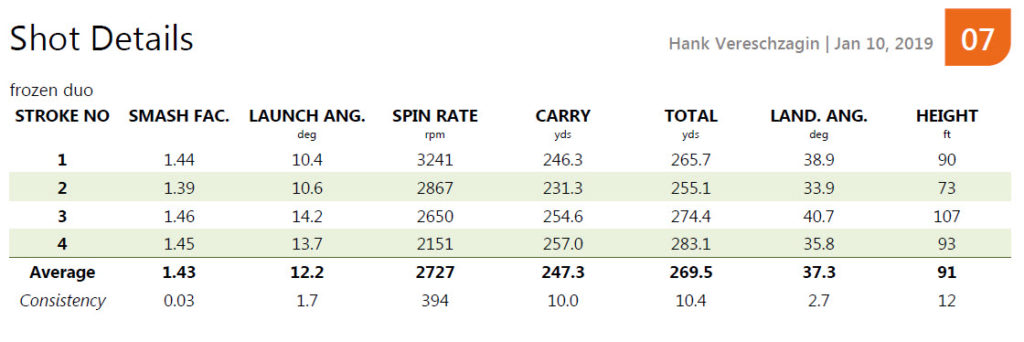
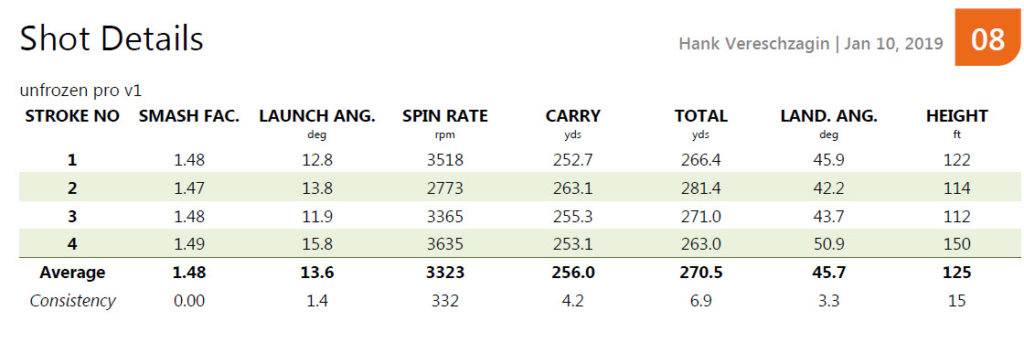
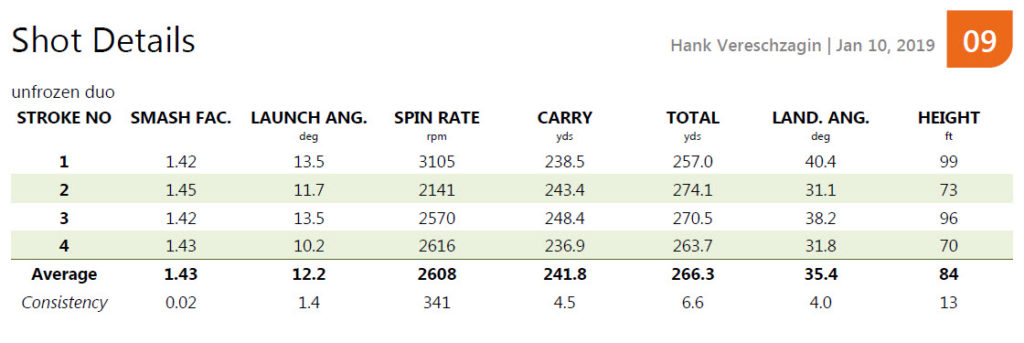
Analysis:
Our experiment had some interesting results. Firstly, from the ProCheck results, we noticed what we would expect. The colder the balls get, the firmer they become. Interestingly though, even the sub-zero duo balls were a lower compression rating than the unfrozen Pro V1s. Unfortunately, due to the frost buildup, we were unable to record proper measurements for the sub-zero Pro V1s. However, as a whole, the ProCheck compression test results support the general theory that golf balls become more firm the colder they get.
Firstly, all the balls tested with the TrackMan were remarkably similar. However, there were some notable trends we recorded. The smash factor for both the Wilson Duo’s and Titleist Pro V1’s decreased as they got colder. However, the change was more noticeable between the frozen and sub-zero balls than between the unfrozen and frozen balls. Likewise, the launch angle seemed to decrease as the balls became colder. This trend was much more noticeable with the Titleist Pro V1 than the Wilson Duo. Most interesting, the Titleist Pro V1 had a lower spin rate as it got colder, while the Wilson Duo had an increased spin rate the colder it became. The carry and total yardage for both balls were the highest with the frozen ball categories and the lowest with the sub-zero balls. Our golfer claimed that when he hit the sub-zero golf balls it, “Felt like the club face was stopping on impact”. Additionally, the sub-zero balls sounded extremely loud. These shots were later described as sounding like, “Minature car accidents”. Unfortunately, we did not record audio for this experiment. As a whole, the TrackMan results show general trends expected from increasing firmness, but the sub-zero balls perform abnormally poorly.
Conclusion:
Our conclusion is that golf balls do indeed become firmer the colder they get. Both the ProCheck compression test and the TrackMan results support that theory. However, the compression does not change drastically between the unfrozen balls and the frozen balls. The TrackMan results only changed greatly when the balls were frozen to intense sub-zero temperatures. The average golfer will not experience temperature swings as drastic as we tested. The fact that a Wilson Duo that is frozen to -109.3 degrees is still not as firm as a regular Titleist Pro V1 sheds light on the real-life implications of this test. We believe that regardless of the temperature when you golf, your same ball is going to perform the most similar to what you’re used to. We do not recommend changing the ball you play depending on the temperature outside. To reiterate, you will experience some changes in compression when you play in different temperature environments, but using a different ball would most likely result in a larger change in feel and firmness than you would experience from simply using the same ball.
Authored by Taylor Morton

